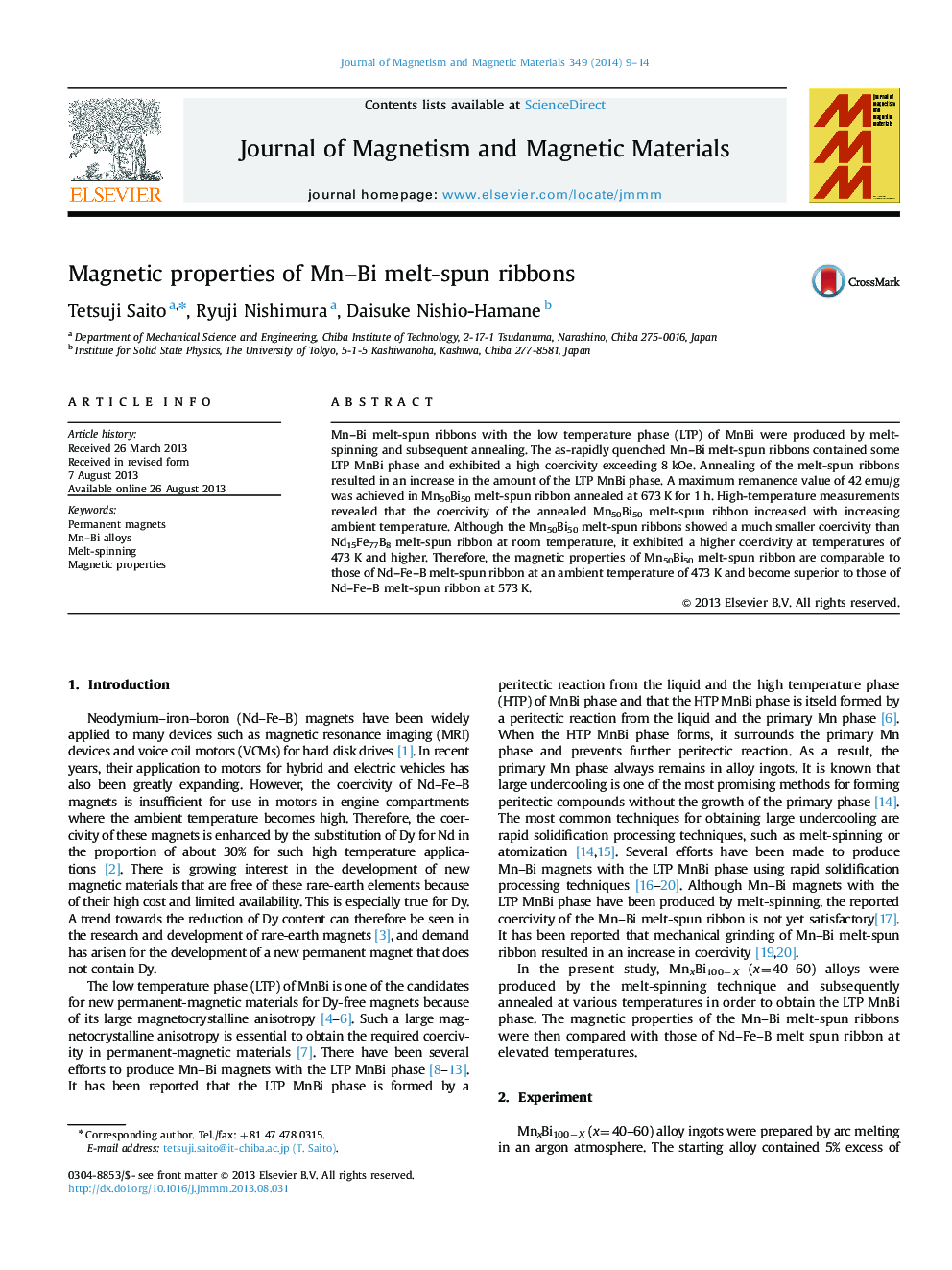| Article ID | Journal | Published Year | Pages | File Type |
|---|---|---|---|---|
| 1799959 | Journal of Magnetism and Magnetic Materials | 2014 | 6 Pages |
•High-coercivity Mn–Bi alloys were produced by melt-spinning.•The Mn–Bi alloys consisted of the LTP MnBi phase.•The coercivity of the Mn–Bi alloys increased with increasing ambient temperature.•The Mn–Bi alloys exhibited a higher coercivity than Nd–Fe–B alloys at 473 K.
Mn–Bi melt-spun ribbons with the low temperature phase (LTP) of MnBi were produced by melt-spinning and subsequent annealing. The as-rapidly quenched Mn–Bi melt-spun ribbons contained some LTP MnBi phase and exhibited a high coercivity exceeding 8 kOe. Annealing of the melt-spun ribbons resulted in an increase in the amount of the LTP MnBi phase. A maximum remanence value of 42 emu/g was achieved in Mn50Bi50 melt-spun ribbon annealed at 673 K for 1 h. High-temperature measurements revealed that the coercivity of the annealed Mn50Bi50 melt-spun ribbon increased with increasing ambient temperature. Although the Mn50Bi50 melt-spun ribbons showed a much smaller coercivity than Nd15Fe77B8 melt-spun ribbon at room temperature, it exhibited a higher coercivity at temperatures of 473 K and higher. Therefore, the magnetic properties of Mn50Bi50 melt-spun ribbon are comparable to those of Nd–Fe–B melt-spun ribbon at an ambient temperature of 473 K and become superior to those of Nd–Fe–B melt-spun ribbon at 573 K.
